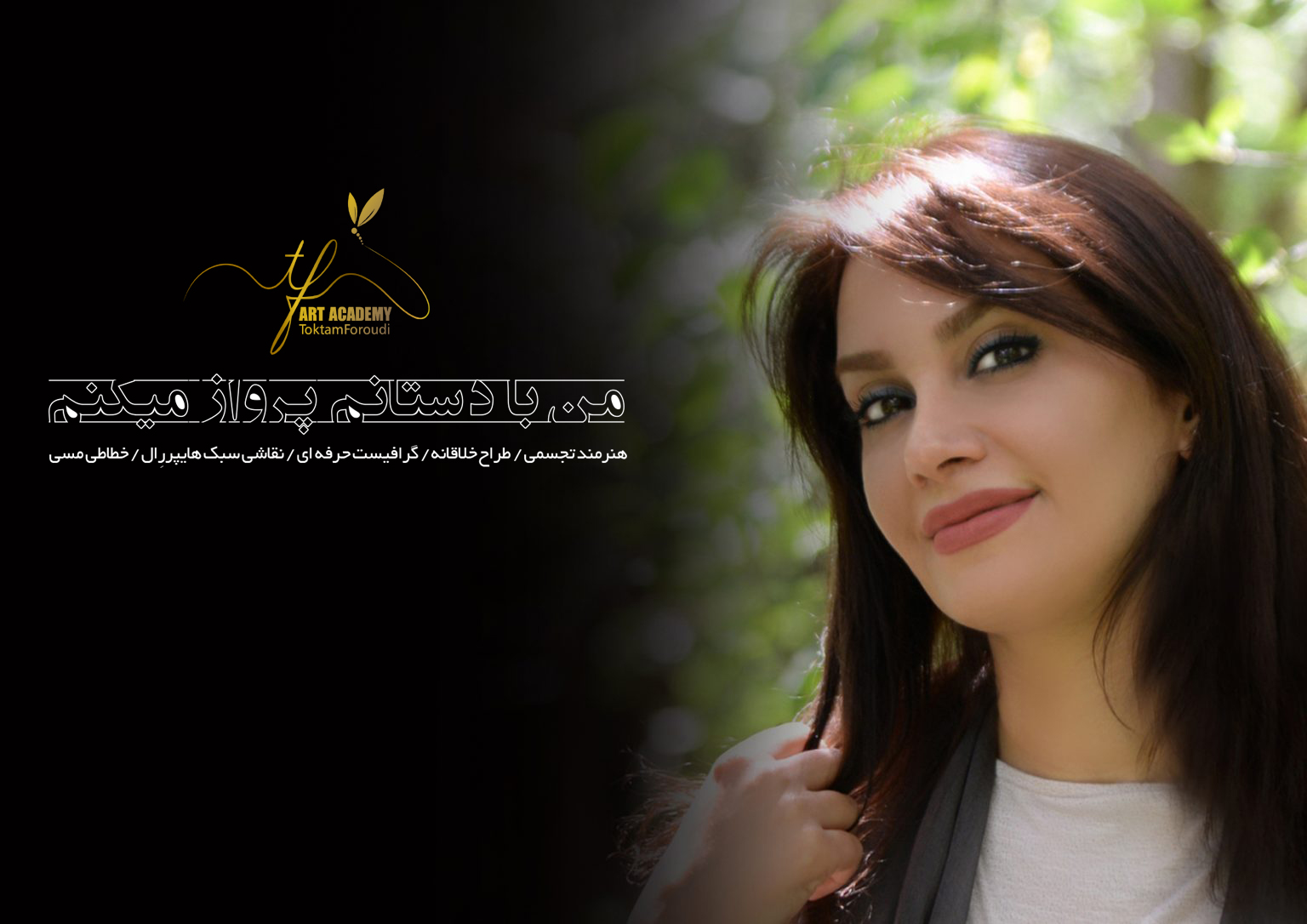
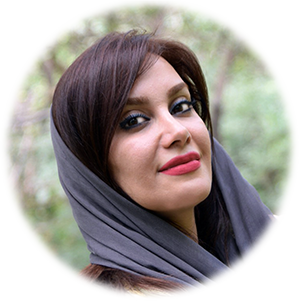
درباره من
سلام، من تکتم هستم.
از کودکی با عشق بیپایان به هنر و دنیای رنگها بزرگ شدم. از سن ۱۲ سالگی، به صورت کاملاً خودآموز و مستقل مسیر نقاشی را آغاز کردم و با جدیت و شور هر روز در این راه پیش رفتم؛ مسیری که سرانجام مرا به دانشگاه هنر رساند، جایی که تحصیلاتم را در رشتهی گرافیک ادامه دادم و دانش و مهارتهایم را به سطحی حرفهای ارتقا دادم.
در طول این مسیر، افتخار کسب رتبههای نخست نقاشی در استان اصفهان، رتبه اول گرافیک در مشهد، و همچنین رتبه برتر کشوری در گرافیک تخصصی را داشتهام. این موفقیتها تنها نقطه شروعی برای راهی پرشور و پر از خلاقیت در دنیای هنر بودند.
من یک هنرمند تجسمی با تخصص در طراحی، تصویرسازی تبلیغاتی و چاپ در حوزه تبلیغات هستم. عضویت رسمی در انجمن طراحان گرافیک ایران (IGDS) و انجمن بینالمللی آبرنگ ایران (IWS) نیز بخشی از فعالیتهای حرفهای من در این مسیر است؛ گواهی بر تعهدم به رشد و توسعه هنر.
هر روز با دستانم قصهای تازه میسازم، با رنگهایم جهان را رنگینتر و زیباتر میکنم و تلاش میکنم در هر اثر، ذرهای از احساسات و رویاهایم را به مخاطب منتقل کنم. هنر برای من بیش از یک حرفه است؛ هنر زبان بیکلامی است که به کمک آن میتوانم احساساتم را به جهانیان نشان دهم و دنیای پیرامونم را از نگاه خودم به تصویر بکشم. این مسیر، راهی است که هر روز با اشتیاق و انگیزه ادامه میدهم تا با خلاقیت و هنر، زندگی را زیباتر کنم.
من گرافیستم
با دستانم پرواز می کنم و با رنگ ها رویا می سازم. طراحی برای من چیزی فراتر از کاره، هر پروژه، داستانیه که از دل به دستانم میاد و روی بوم یا صفحه ای دیجیتال زندگی می کنه.
اولویتم اینه که هر طراحی نه تنها زیبا باشه، بلکه پیامی داشته باشه که در ذهن و قلب مخاطب بمونه. من با دقت به جزئیات و به احساسات پشت هر ایده نزدیک می شم، تا طرحی بسازم که ماندگار باشه و با شما در ارتباط باشه گرافیک تصاویر یا طرح های بصری روی برخی از سطوح مانند دیوار، بوم، صفحه، کاغذ یا سنگ برای اطلاع رسانی، تصویرسازی یا سرگرمی است. در استفاده معاصر، شامل نمایش تصویری داده ها، مانند طراحی و ساخت، در حروفچینی و هنرهای گرافیکی، و در نرم افزارهای آموزشی و تفریحی است. تصاویری که توسط کامپیوتر تولید می شوند، گرافیک کامپیوتری نامیده می شوند. به عنوان مثال می توان به عکس ها، طراحی ها، هنر خطی، نمودارهای ریاضی، نمودارهای خطی، نمودارها، تایپوگرافی، اعداد، نمادها، طرح های هندسی، نقشه ها و نقشه های مهندسی یا سایر تصاویر اشاره کرد. گرافیک اغلب متن، تصویر و رنگ را ترکیب می کند .طراحی گرافیک ممکن است شامل انتخاب عمدی، ایجاد یا ترتیب تایپوگرافی به تنهایی باشد، مانند یک بروشور، پوستر، وب سایت یا کتاب بدون هیچ عنصر دیگری. هدف می تواند وضوح یا ارتباط مؤثر، ارتباط با سایر عناصر فرهنگی یا صرفاً ایجاد یک سبک متمایز باشد. گرافیک می تواند کاربردی یا هنری باشد. مورد دوم می تواند یک نسخه ضبط شده باشد، مانند یک عکس، یا تفسیر توسط یک دانشمند برای برجسته کردن ویژگی های اساسی، یا یک هنرمند، در این صورت ممکن است تمایز با گرافیک خیالی مبهم شود. همچنین می توان از آن برای معماری استفاده کرد.


آشنایی و معرفی آکادمی
آکادمی هنری من در سال ۲۰۱۰ با یک آرزو شکل گرفت—آرزوی خلق فضایی امن، پویا و الهامبخش برای هنرجویانی که میخواهند جهان را از دریچهی رنگ و خلاقیت ببینند. این فضا، نهفقط یک مکان آموزشی، بلکه بستری برای پرورش احساس، کشف استعداد و تجلی رویاهاست. در این سالها، با تکیه بر تجربه و عشق به هنر، موفق شدهایم نسلهای مختلفی از هنرجویان را آموزش دهیم؛ هنرجویانی که بسیاری از آنها امروز در مسیرهای هنری خود میدرخشند و در مسابقات، جشنوارهها و رویدادهای هنری داخلی و بینالمللی جایگاههای درخشانی کسب کردهاند. آکادمی، به گونهای طراحی و تجهیز شده است که بتواند نیازهای آموزشی طیف متنوعی از رشتهها را پاسخ دهد؛ از نقاشی آبرنگ و مدادرنگی گرفته تا طراحی زغالی، پاستل، طراحی کلاسیک و تصویرسازیهای تخصصی. در این مسیر، ما همواره به روزترین متریال و شیوههای آموزشی را بهکار گرفتهایم تا هنرجویان در بهترین شرایط ممکن رشد کنند. در سالهای اخیر، خوشنویسی مسی نیز به مجموعه رشتههای آموزشی ما افزوده شده است. این بخش، با استقبال گرم هنرجویان مواجه شده و امروز به عنوان یکی از شاخههای فعال آکادمی ، نقش مهمی در پرورش ذوق بصری و هماهنگی ذهن و دست ایفا میکند. ما در این آکادمی باور داریم که آموزش هنر، فراتر از یاد دادن تکنیک است؛ هنر، زبانی برای درک جهان و بیان احساسات است. بنابراین پیگیری مداوم مسیر پیشرفت هر هنرجو، ارائه بازخوردهای دقیق و صمیمانه، و ایجاد فضایی سرشار از آرامش و انگیزه، از اولویتهای همیشگی ماست. در اینجا، هنر تنها آموخته نمیشود، بلکه زندگی میشود. ما در کنار هم، میآموزیم که با دستانمان، رویاها را شکل دهیم، احساساتمان را به رنگ و فرم ترجمه کنیم و در آسمان هنر، جسورانه پرواز کنیم.
رویدادهای هنری
رویدادها | جایی برای تماشای تپش هنر. در جهان بیمرزِ هنر، لحظاتی وجود دارند که فراتر از واژهها، در دل آدمی جا باز میکنند. لحظاتی که در آن، خلاقیت جان میگیرد،، رنگها سخن میگویند،، و نگاهها به گفتوگویی خاموش اما عمیق دعوت میشوند. در این بخش از سایت، شما را به تماشای رویدادهایی دعوت میکنیم که هر یک، آیینهای از تجربه، احساس و رشد هنری هستند. نمایشگاههای آثار هنرجویان، نشستهای هنری، ورکشاپهای آموزشی و دورهمیهای خلاقانه، در دل این فضا میدرخشند تا پلی باشند میان آنچه هستیم و آنچه میتوانیم بشویم. در هر رویداد، فرصتی نهفته است برای کشف دوبارهی خود؛، جایی که خطوط و رنگها، روایتگر آرزوها و دغدغههای درون ما میشوند. و تجربهها، بستری میسازند برای یادگیری، گفتگو، و الهام. اینجا، هنر نهتنها در قابها، بلکه در لبخندها، نگاهها و حتی سکوتهای بین آدمها جاریست. ما باور داریم که هنر، تنها خلقکردن نیست—بلکه زیستن، درک کردن و به اشتراک گذاشتن است. پس اینجا، در آسمان هنر، با ما همراه شوید در پروازی مشترک میان رنگ، نور، و بیانتهاترین لایههای احساس. هر رویداد، بهانهایست برای نزدیکتر شدن به قلب تپندهی هنر؛ برای لمس لحظههایی که به زبان رنگ، خودشان را فریاد میزنند و ما را به تماشای عمق زندگی میبرند
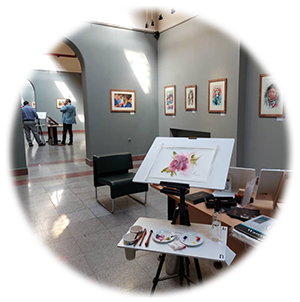
نمایشگاه برگ ریزان – نگارخانه حامی – 15 آبان 1404
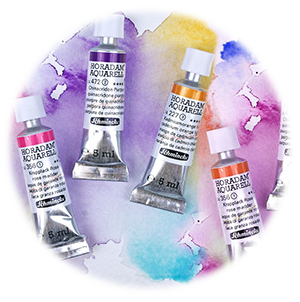
آبرنگ
رنگ آبرنگ یک شکل باستانی از نقاشی است، اگر نگوییم کهن ترین شکل هنر. در شرق آسیا، نقاشی آبرنگ با جوهر به نقاشی قلم مو یا نقاشی طوماری گفته می شود. در نقاشیهای چینی، کرهای و ژاپنی، غالباً در رنگهای سیاه یا قهوهای تک رنگ، اغلب از جوهر یا رنگدانههای دیگر استفاده میشود. هند، اتیوپی و سایر کشورها نیز سنت های طولانی نقاشی آبرنگ دارند. بسیاری از هنرمندان غربی، بهویژه در اوایل قرن نوزدهم، از آبرنگ عمدتاً بهعنوان ابزار طراحی برای آمادهسازی کار «تمامشده» روی روغن یا حکاکی استفاده میکردند. تا پایان قرن هجدهم، آبرنگ های سنتی به عنوان «نقاشی رنگی» شناخته می شدند.
سیاه قلم و کنته
کنته که به عنوان چوب های کنته یا مداد رنگی کنته نیز شناخته می شود، یک محیط کششی است که از گرافیت پودری فشرده یا زغال چوب مخلوط شده با پایه سفالی، مربع در مقطع تشکیل شده است. آنها در سال 1795 توسط Nicolas-Jacques Conté اختراع شدند که ترکیبی از خاک رس و گرافیت را در پاسخ به کمبود گرافیت ناشی از جنگ های ناپلئون (زمانی که محاصره دریایی بریتانیا از فرانسه مانع واردات شد) ایجاد کرد. مداد رنگی کنته این مزیت را داشت که تولید مقرون به صرفه بود و ساخت آن در درجه های سختی کنترل شده آسان بود. زغال هنرمندان، زغالی است که به عنوان یک رسانه هنری خشک استفاده می شود. هم از زغال فشرده و هم از چوب زغال استفاده می شود. علائمی که روی کاغذ از خود به جا می گذارد نسبت به سایر رسانه ها مانند گرافیت بسیار کمتر ماندگار است و بنابراین خطوط را می توان به راحتی پاک کرد و با هم ترکیب کرد. زغال می تواند خطوطی ایجاد کند که بسیار روشن یا به شدت سیاه هستند. محیط خشک را می توان تقریباً روی هر سطحی از صاف تا بسیار درشت اعمال کرد. فیکساتورها با نقشه های زغال چوب برای محکم کردن موقعیت برای جلوگیری از پاک شدن یا مالش گرد و غبار زغال چوب استفاده می شوند. روشی که برای ایجاد زغال هنرمندان استفاده می شود مشابه روشی است که در زمینه های دیگر مانند تولید باروت و سوخت پخت و پز استفاده می شود. نوع مواد چوبی و روش آماده سازی انواع زغال چوب و بافت ها را امکان پذیر می کند

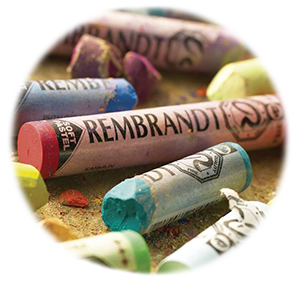
پاستل گچی
نقاشی پاستل یا طراحی پاستل با وسیله ای از رنگدانه مخلوط با گچ یا خاک رس شروع می شود و با صمغ ترکیب می شود تا خمیری ایجاد شود که سپس سفت شده و به صورت پاستل نرم یا سخت، مداد پاستلی یا پاستل روغنی در دسترس قرار می گیرد. درسهای پاستل معمولاً این رسانه را هم از نظر طراحی و هم نقاشی مورد بحث قرار میدهند. می توان از آن برای ایجاد خطوط پهن که مانند رنگ روغن کره ای و جامد به نظر می رسند استفاده کرد، اما می توان از آنها برای ایجاد خطوط و علائم دقیق شبیه به هر وسیله طراحی استفاده کرد. جذابیت بیشتر نقاشی پاستل در طیف گسترده رنگ ها و توانایی ترکیب آن نهفته است.
چیزی که پاستل ها را منحصر به فرد می کند این است که پاستل ها مانند سایر مواد مانند روغن، آبرنگ یا رنگ های آکرلیک با هم مخلوط نمی شوند. یک هنرمند باید رنگ و ارزش خاصی را که میخواهد انتخاب کند، یا باید چندین خط پاستل را روی هم بگذارد تا در چشم بیننده با هم ترکیب شوند و طوری به نظر برسند که گویی از نظر فیزیکی ترکیب شدهاند. یک هنرمند پاستل باید برای کار با پاستل حس قوی لایه بندی و رنگ گزاری را داشته باشد.
مداد رنگی
مداد رنگی یک رسانه هنری است که از یک هسته باریک رنگدانهای که در یک محفظه استوانهای چوبی قرار گرفته است، ساخته شده است. برخلاف مدادهای گرافیتی و زغالی، هستههای مداد رنگی بر پایه موم یا روغن است و حاوی نسبتهای متفاوتی از رنگدانهها، افزودنیها و عوامل اتصال است. مدادهای محلول در آب و مدادهای پاستلی و همچنین هسته های رنگی برای مدادهای مکانیکی نیز تولید می شوند. مدادهای رنگی در طیف وسیعی از قیمت، کیفیت و کاربرد، از درجه دانشجویی تا حرفه ای ساخته می شوند. غلظت رنگدانه ها در هسته، مقاومت در برابر نور رنگدانه ها، ماندگاری مداد رنگی و نرمی هسته از عوامل تعیین کننده کیفیت یک برند و در نتیجه قیمت آن در بازار است. هیچ تفاوت کیفیت کلی بین مداد رنگی مبتنی بر موم/روغن و مداد رنگی محلول در آب وجود ندارد، اگرچه برخی از تولیدکنندگان مدادهای محلول در آب خود را نسبت به مدادهای مبتنی بر موم/ روغن مشابه خود نسبت به مدادهای مبتنی بر موم/ روغن سبکتر ارزیابی میکنند. محبوبیت روزافزون مداد رنگی به عنوان یک رسانه هنری، جرقه شروع انجمن مداد رنگی آمریکا (CPSA) شد. طبق وبسایت آن، «[CPSA] در سال 1990 به عنوان یک سازمان غیرانتفاعی که به هنرمندان بالای 18 سال که با مداد رنگی کار میکنند، تأسیس شد». CPSA نه تنها هنر مداد رنگی را به عنوان هنر زیبا ترویج میکند، بلکه تلاش میکند استانداردهای پایداری نور را برای تولیدکنندگان مداد رنگی تعیین کند. کشورهای دیگری مانند بریتانیا، ایالات متحده، کانادا، استرالیا و مکزیک – در میان بسیاری دیگر – سازمان ها و انجمن های خود را برای هنرمندان مداد رنگی تشکیل داده اند. مدادهای رنگی معمولاً برای جلوگیری از آسیب در جعبه های مدادی نگهداری می شوند. علیرغم وجود مداد رنگی برای بیش از یک قرن، دنیای هنر از لحاظ تاریخی با این رسانه در مقایسه با سایر رسانه های هنری با تحسین کمتری برخورد کرده است. با این حال، کشف تکنیکها و روشهای جدید، توسعه مدادهای نور سریع و تشکیل سازمانهای معتبر بهتر است که مداد رنگی را قادر میسازد تا با سایر رسانهها رقابت کند. علاوه بر این، مدادهای رنگی در مقایسه با سایر رسانه ها مقرون به صرفه تر، تمیزتر و ساده تر هستند.

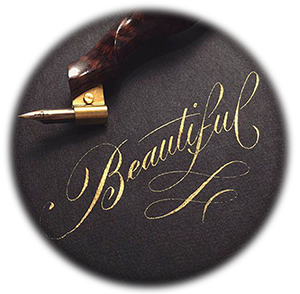
خط کاپرپلیت
خط مسی سبکی از خوشنویسی است که بیشتر با زبان انگلیسی Roundhand مرتبط است. اگر چه اغلب به عنوان یک اصطلاح چتر برای اشکال مختلف خوشنویسی با قلم نوک تیز استفاده می شود، Copperplate به طور دقیق به سبک های خطی اشاره دارد که در کتاب های کپی ایجاد شده با استفاده از روش چاپ قلمی ایجاد شده است. عبارت Copperplate Script یکی از شناختهشدهترین و محبوبترین سبکهای خوشنویسی تمام دوران را مشخص میکند.
نسخه های قبلی این اسکریپت به یک قلم پر با نوک نازک نیاز داشت. بعدها، با افزایش صنعتی شدن، استفاده از نوک های فلزی با نوک ریز انعطاف پذیرتر و بادوام تر گسترده شد. بسیاری از استادان مشارکت خود را در تعریف قوانین زیباییشناختی خط مسی ارائه کردند، اما چیزی که بهعنوان اساسی برجسته شد، کار استاد نویسندگی و حکاکی جورج بیکهام بود که در کتاب خود قلمنویس جهانی (1733-1741) نمونههایی از فیلمنامه را جمعآوری کرد. بیست و پنج نفر از با استعدادترین خوشنویسان لندنی. مسی بدون شک رایج ترین خط در دوره بین قرن 17 و 18 بود و نفوذ آن نه تنها در سراسر اروپا بلکه در آمریکای شمالی نیز گسترش یافت.




























































































































